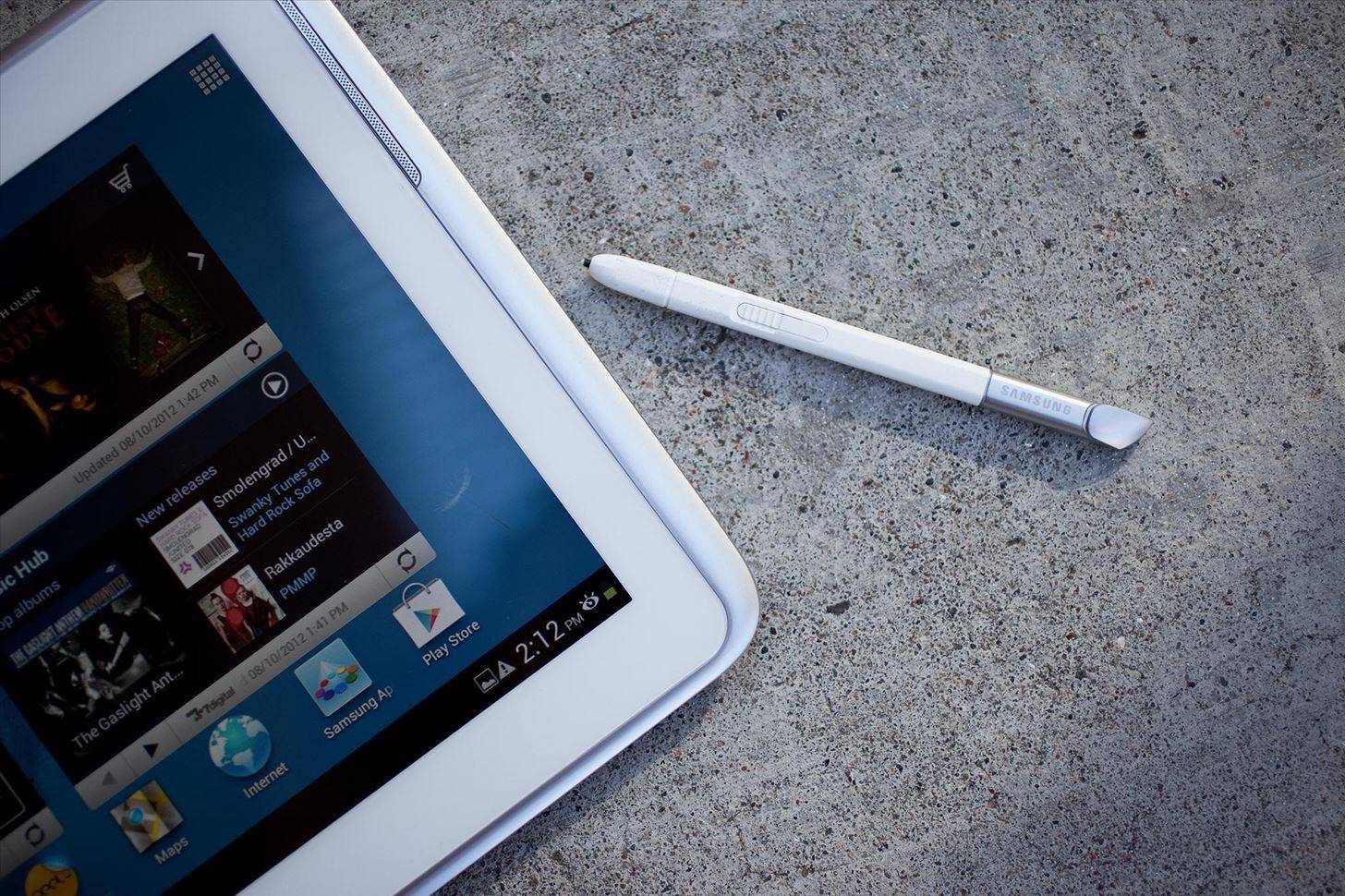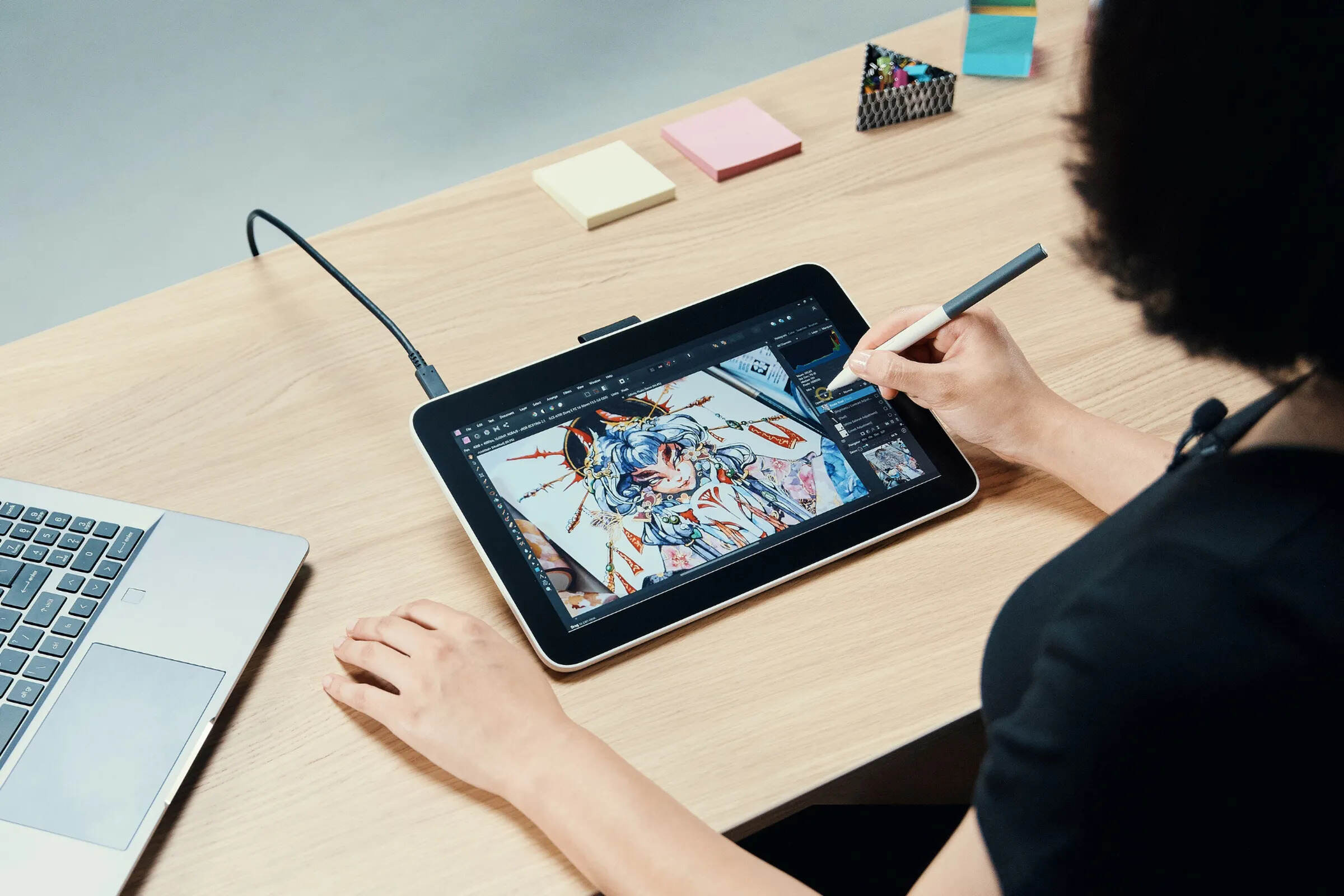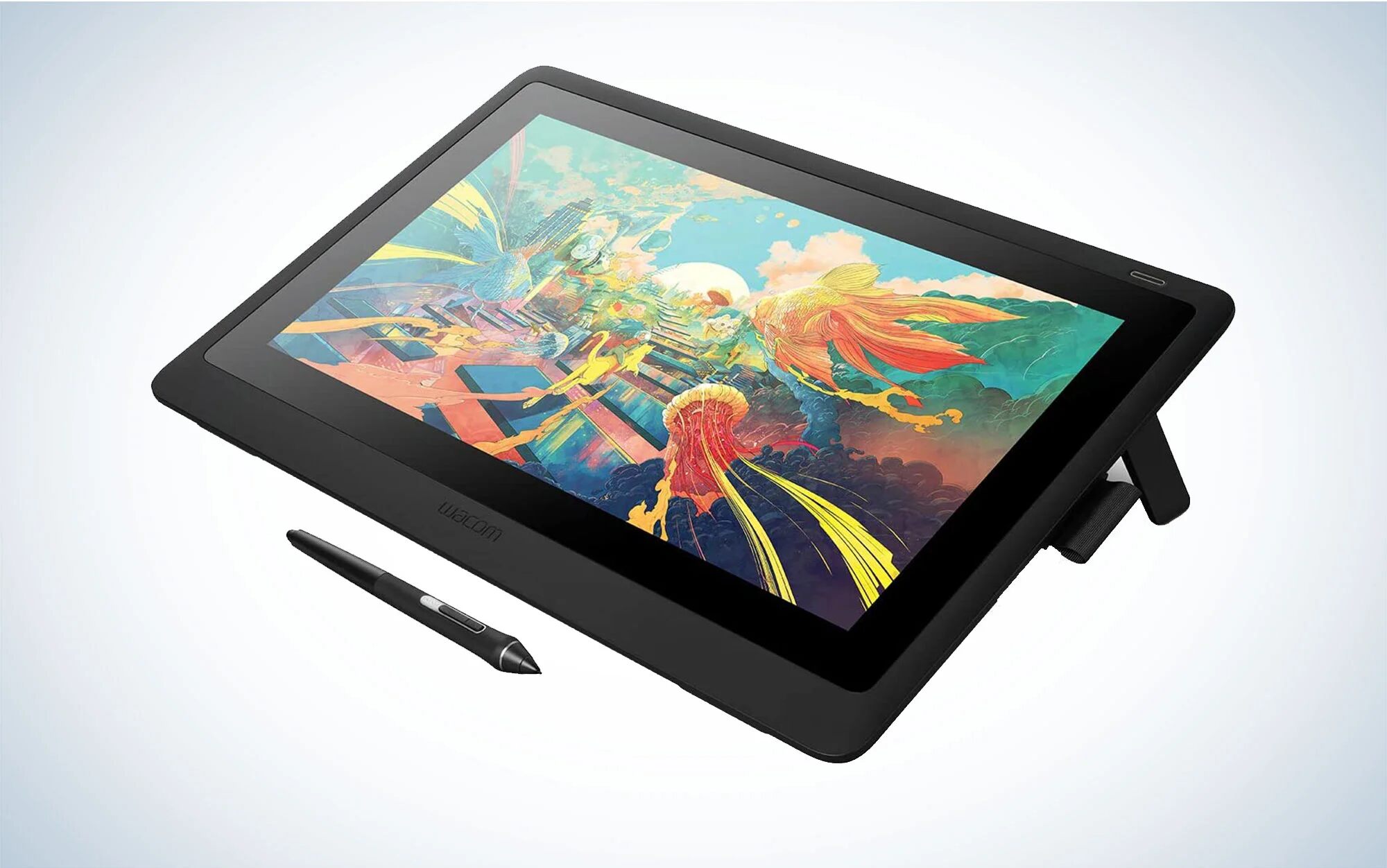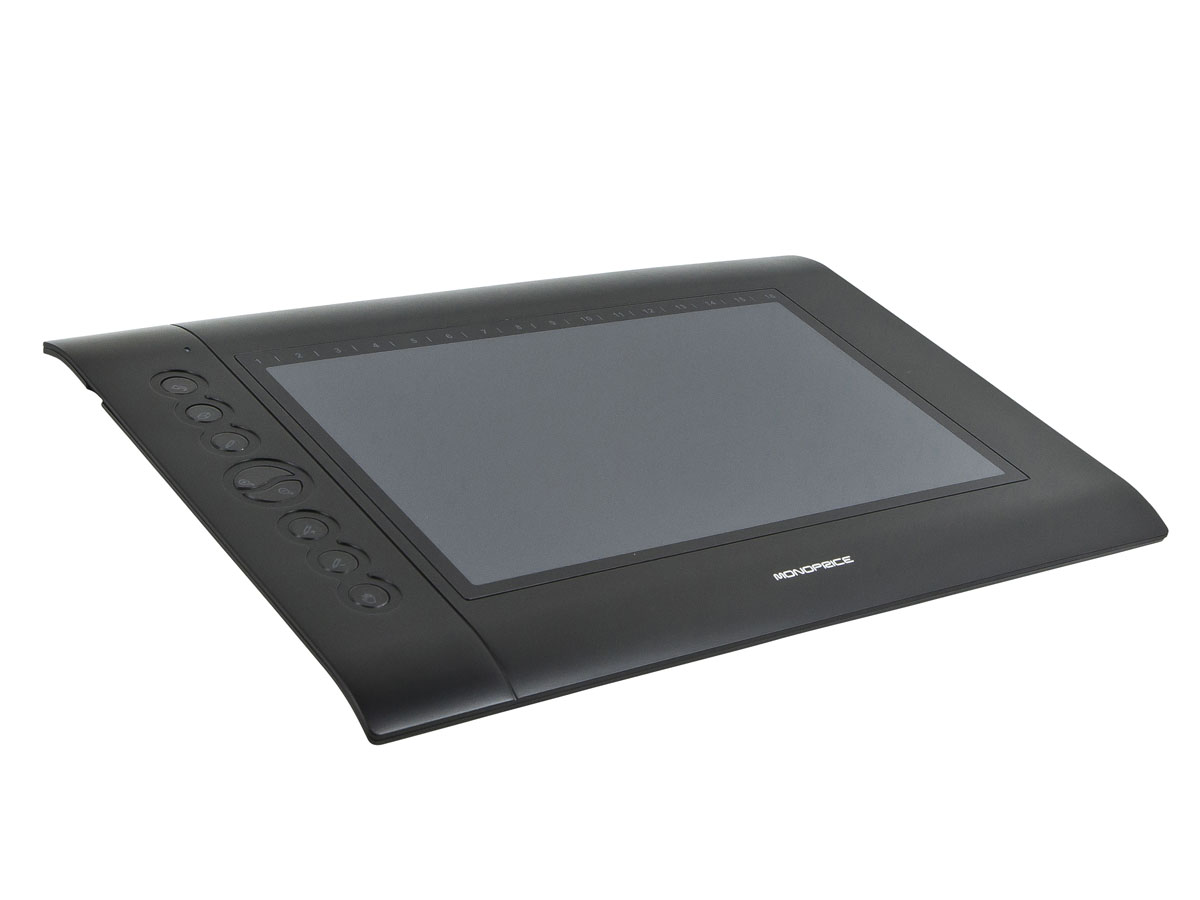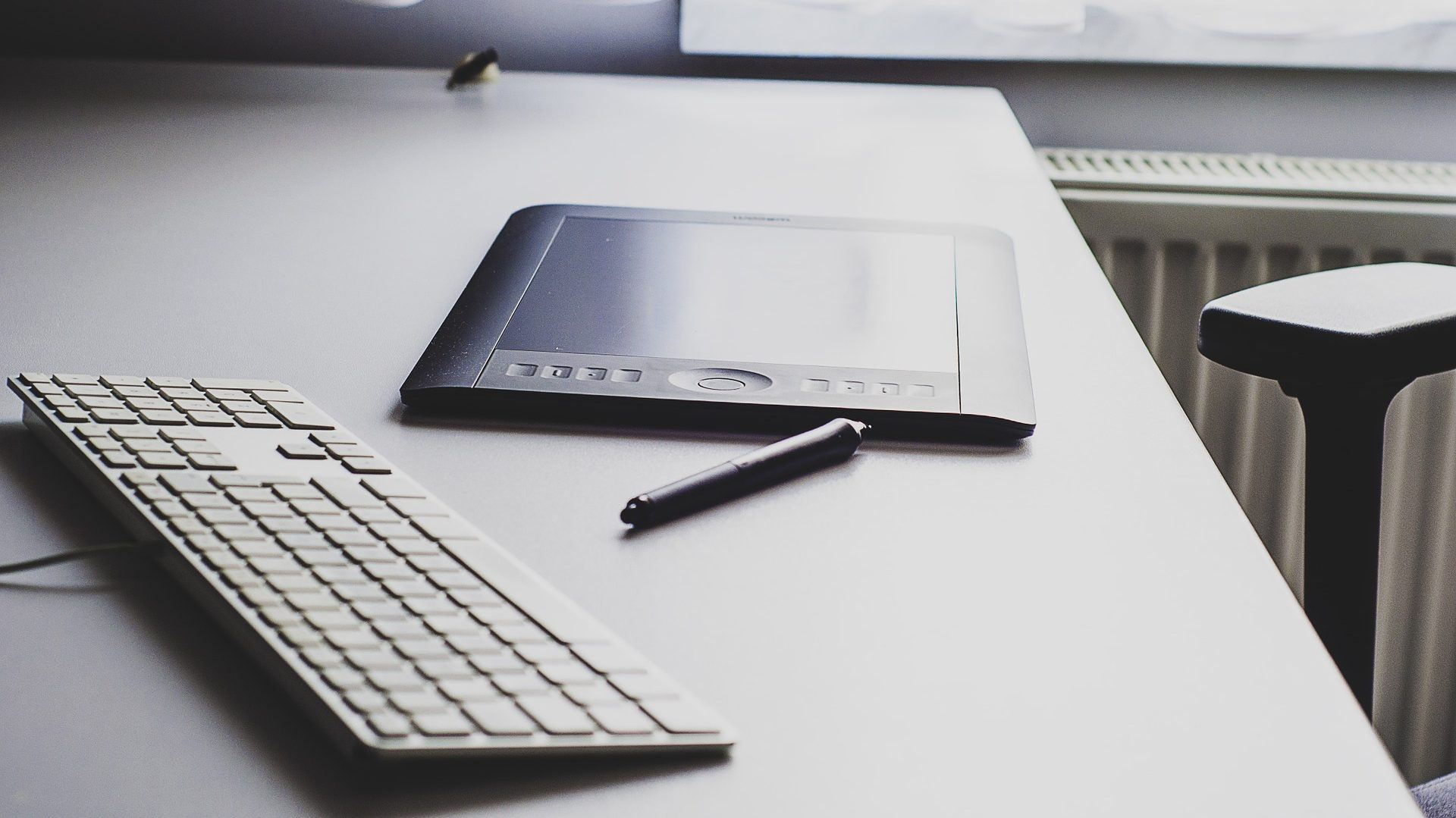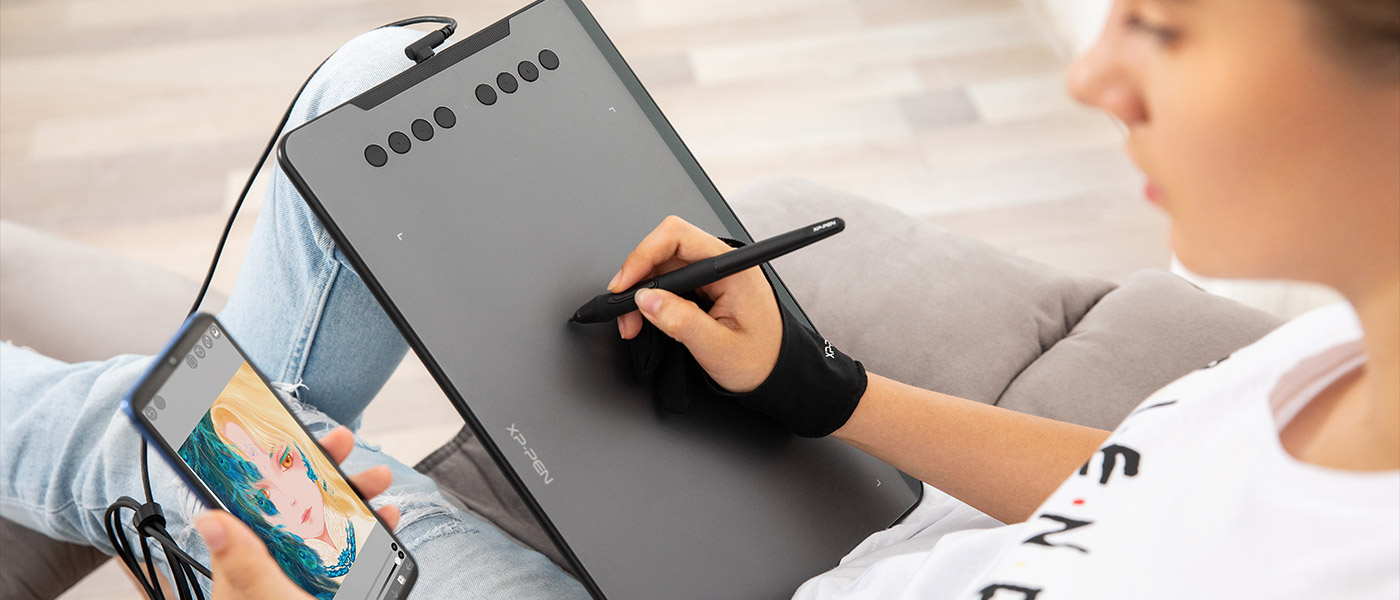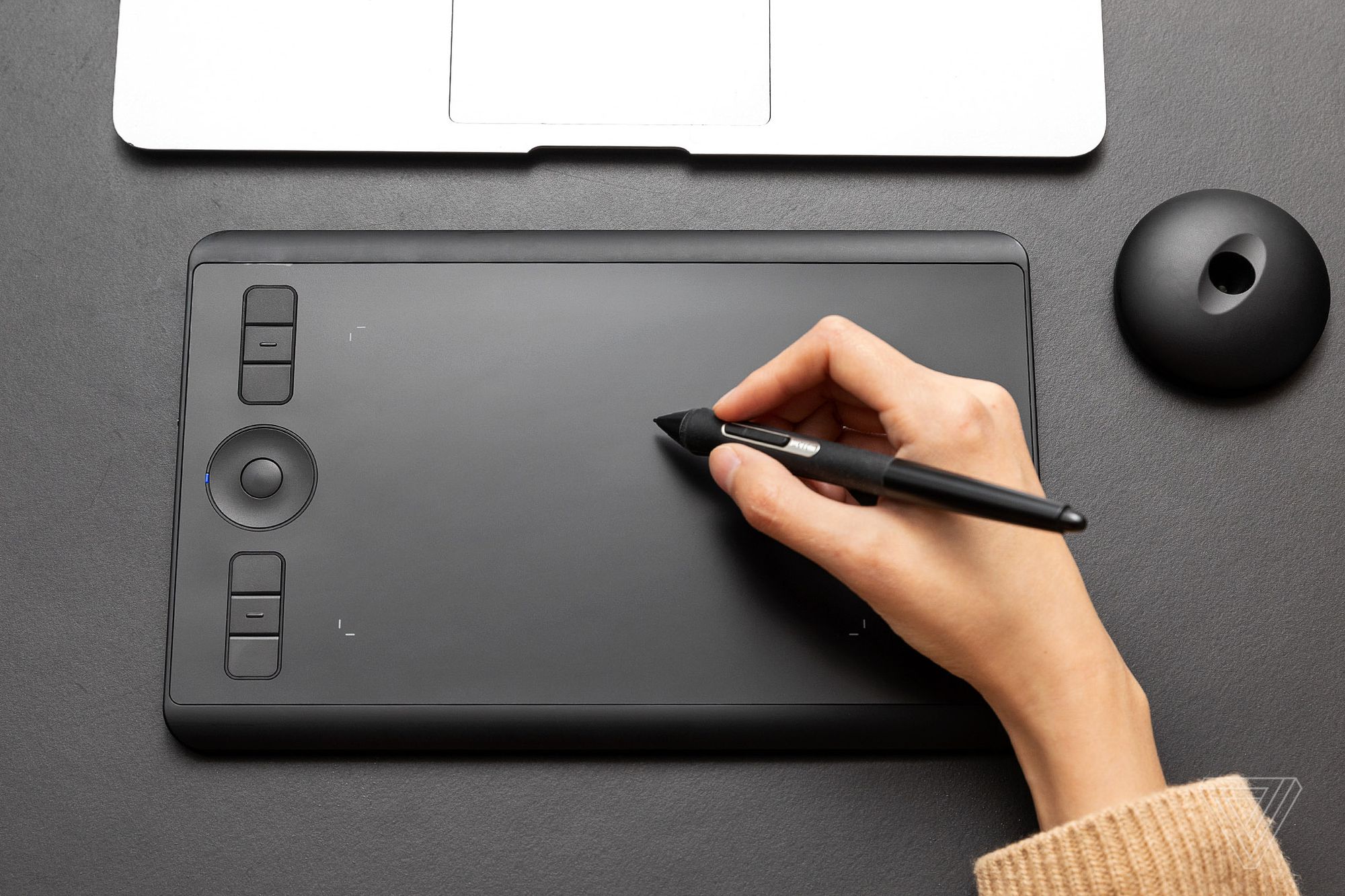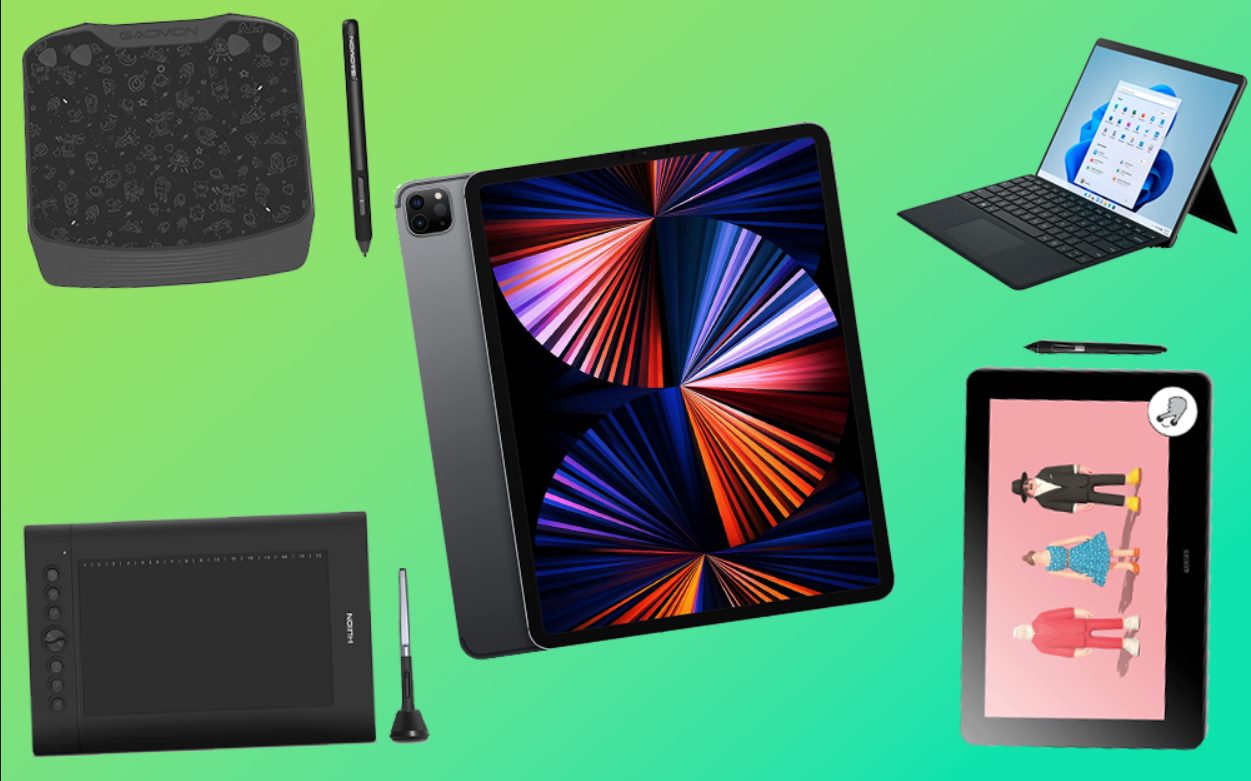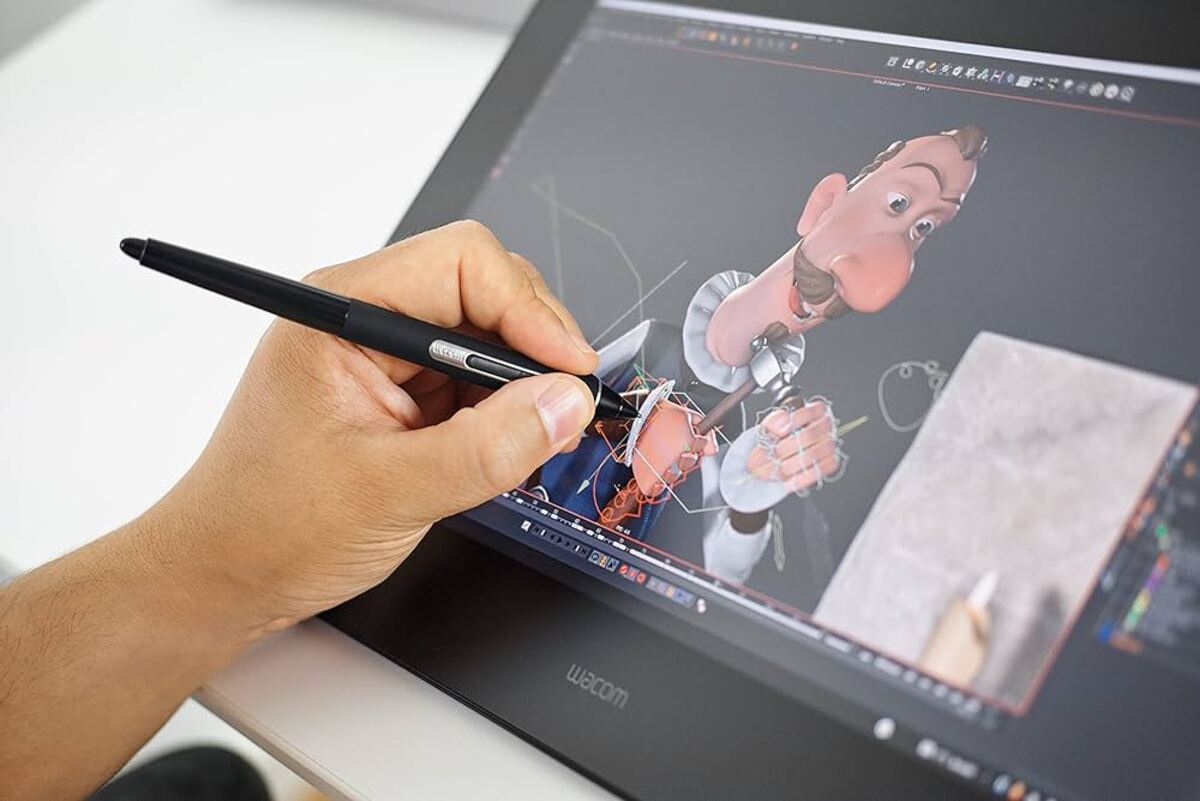Introduction
Welcome to our guide on how to fix pressure sensitivity on your tablet. Tablets have become an essential tool for artists, graphic designers, and anyone who wants to unleash their creativity digitally. The ability to apply varying amounts of pressure on the screen allows for more accurate and realistic drawings or brush strokes.
However, like any technology, tablets can sometimes experience issues with pressure sensitivity. Whether you’re noticing that your lines aren’t responding correctly, or you’re unable to achieve the desired level of control, it can be frustrating when pressure sensitivity doesn’t work as it should.
But fear not! In this guide, we’ll walk you through the common issues that can affect pressure sensitivity and provide you with troubleshooting steps to fix them. Whether you’re a beginner or a seasoned artist, these tips will help you get your tablet’s pressure sensitivity back on track.
Before we dive into the troubleshooting steps, let’s take a moment to understand what pressure sensitivity is and why it’s important for tablet users.
Understanding Pressure Sensitivity
Pressure sensitivity is a feature found in many modern tablets that allows the device to recognize the varying degrees of pressure applied to the screen. It provides a more natural and intuitive drawing experience, similar to using a traditional pen or brush on paper.
When you apply light pressure with your stylus or finger, the tablet registers a thin, faint line. As you increase the pressure, the line becomes thicker and bolder. This ability to control line thickness based on pressure enables artists to create detailed and dynamic artwork with precision.
Pressure sensitivity also plays a crucial role in digital painting and shading. With a pressure-sensitive tablet, artists can easily transition from light to dark strokes, creating realistic shading and depth in their artwork. It allows for greater control over brush strokes, giving artists the ability to create delicate nuances and textures.
It’s important to note that pressure sensitivity is not limited to art applications alone. Many productivity apps, note-taking apps, and even games are designed to utilize pressure sensitivity for enhanced functionality.
Most tablets with pressure sensitivity use a technology called “electro-magnetic resonance” or EMR. EMR works by detecting changes in electrical fields when the stylus or finger comes into contact with the tablet screen. The tablet then interprets these changes to determine the pressure level applied.
Now that you have a better understanding of what pressure sensitivity is and its significance in digital art, let’s move on to common issues that can arise with pressure sensitivity and how to troubleshoot them.
Common Issues with Pressure Sensitivity
While pressure sensitivity can greatly enhance the digital drawing experience, it’s not uncommon to encounter issues with its functionality. Here are some common problems that tablet users may face:
- Inconsistent pressure sensitivity: This issue occurs when the tablet does not consistently register the applied pressure, leading to uneven line thickness or lack of responsiveness.
- No pressure sensitivity: In some cases, pressure sensitivity might not work at all, resulting in all lines appearing the same thickness regardless of the pressure applied.
- Overly sensitive pressure: Alternatively, the tablet may interpret even the lightest touch as excessive pressure, resulting in thick and bold lines even when you intend to create delicate strokes.
- Lag or delay: Some users may experience a noticeable delay between the application of pressure and the tablet’s response. This lag can significantly impact the drawing experience.
- Unresponsive areas: Certain areas of the tablet screen may not respond to pressure at all, leading to inconsistent and frustrating drawing or writing experiences.
- Compatibility issues: Pressure sensitivity problems can also arise when using certain applications or operating systems that are not fully compatible with the tablet’s drivers or settings.
If you are experiencing any of these issues, don’t worry! In the next section, we will provide you with troubleshooting steps to help address these problems and restore the pressure sensitivity functionality on your tablet.
Troubleshooting Pressure Sensitivity Problems
If you’re facing issues with pressure sensitivity on your tablet, follow these troubleshooting steps to restore its functionality:
- Update Drivers: Outdated or incompatible drivers can often cause pressure sensitivity problems. Visit the manufacturer’s website to download and install the latest drivers specifically designed for your tablet model.
- Adjust Pressure Sensitivity Settings: Check your tablet’s settings or driver software for options to customize pressure sensitivity. Experiment with different settings to find the optimal configuration for your needs.
- Calibrate Your Tablet: Some tablets have a calibration option that allows you to align the screen accurately. Access the calibration settings and follow the instructions provided to ensure precise pressure sensitivity.
- Check Hardware Connections: Ensure that the connection between your tablet and the computer is secure. Loose cables or faulty USB ports can cause pressure sensitivity issues. Try using a different USB cable or port to see if the problem persists.
- Reset Tablet Settings: Resetting your tablet to its default settings can often resolve software-related issues. However, note that this will also erase any personalized settings or installed applications, so make sure to back up your data before proceeding.
- Use Compatibility Mode (Windows): If you’re experiencing pressure sensitivity problems on a Windows system, try running the applicable software or driver in compatibility mode. Right-click on the application or driver setup file, go to Properties, and enable compatibility mode for the recommended operating system.
- Consult Manufacturer Support: If you’ve tried the above steps and are still facing pressure sensitivity issues, reach out to the manufacturer’s support team for further assistance. They can provide specific guidance or help determine if there’s a hardware defect that needs to be addressed.
By following these troubleshooting steps, you can often resolve pressure sensitivity problems on your tablet and get back to enjoying a seamless drawing experience. If the issue persists, it’s advisable to seek expert assistance to ensure a proper diagnosis and solution.
Update Drivers
Outdated or incompatible drivers can often be the culprit behind pressure sensitivity issues on your tablet. Drivers act as the intermediary between your tablet’s hardware and the operating system, enabling proper communication and functionality.
To update your tablet’s drivers:
- Visit the manufacturer’s website: Go to the official website of your tablet’s manufacturer.
- Locate the drivers section: Look for a section dedicated to drivers or downloads.
- Select your tablet model: Find your specific tablet model and select it.
- Download the latest drivers: Look for the most recent drivers compatible with your tablet model and download them. Make sure to choose drivers that match your operating system.
- Install the drivers: Once the drivers are downloaded, run the installation file and follow the on-screen instructions to complete the installation process.
- Restart your tablet: After the installation is complete, restart your tablet to ensure the new drivers are properly applied.
Updating the drivers can help resolve compatibility issues and ensure that your tablet’s pressure sensitivity functions as expected. It’s crucial to keep your drivers up to date, as manufacturers often release updates to address known issues and enhance performance.
If updating the drivers doesn’t fix the pressure sensitivity problem, don’t worry. There are still other troubleshooting steps we can try to address the issue.
Adjust Pressure Sensitivity Settings
Adjusting the pressure sensitivity settings on your tablet can sometimes help resolve issues with inconsistent or non-responsive pressure sensitivity. Different tablets and software may have varying options for adjusting these settings, so it’s essential to explore your tablet’s settings or driver software to find the appropriate configuration options. Here’s how:
- Access the settings or driver software: Open the settings or driver software for your tablet. This can usually be done through the control panel or a dedicated application that came with your tablet.
- Locate pressure sensitivity settings: Look for options related to pressure sensitivity or pen settings. These settings may be categorized under a specific section, such as “pen pressure” or “stylus settings.”
- Adjust the sensitivity levels: Experiment with different sensitivity levels to find the setting that works best for you. You may be able to adjust the pressure curve, which determines the relationship between pressure applied and the thickness of the resulting line.
- Test the settings: Use a drawing or painting software to test the changes you’ve made. Apply different levels of pressure to see if the sensitivity is responding as desired.
- Fine-tune as needed: If the pressure sensitivity still isn’t satisfactory, continue to make adjustments in small increments until you find the optimal settings that suit your preferences.
By tweaking the pressure sensitivity settings, you can often improve the responsiveness and accuracy of your tablet’s pressure sensitivity. It may take some trial and error to find the perfect balance, so be patient and persistent in your adjustments.
If adjusting the pressure sensitivity settings doesn’t solve the problem, don’t worry. There are more troubleshooting steps to explore, which we’ll cover in the next sections.
Calibrate Your Tablet
Calibrating your tablet is an important step in ensuring accurate pressure sensitivity. Tablet calibration helps align the screen with the stylus or finger, ensuring that the tablet accurately registers the pressure applied. If the calibration is off, it can lead to inconsistent or inaccurate pressure sensitivity.
To calibrate your tablet, follow these steps:
- Access the tablet settings or driver software: Open the settings or driver software for your tablet. Look for a section specifically related to calibration or screen alignment.
- Follow the instructions: Depending on your tablet model and software, the calibration process may vary. Generally, you will be guided through a series of instructions to calibrate the tablet and align the screen. This often involves tapping specific points on the screen with the stylus or finger as prompted.
- Complete the calibration process: Follow the on-screen instructions to complete the calibration process. Ensure that you follow the instructions precisely to achieve accurate calibration.
- Test the pressure sensitivity: Once the calibration process is complete, test the pressure sensitivity by using a drawing or painting software. Apply varying levels of pressure to see if the tablet accurately reflects the changes in line thickness.
- Repeat if necessary: If you’re still experiencing pressure sensitivity issues after calibration, you may need to repeat the process or try a different method of calibration.
Regular calibration can help maintain the accuracy of pressure sensitivity over time. It’s recommended to calibrate your tablet periodically, especially if you notice any changes or inconsistencies in the pressure sensitivity.
If calibrating your tablet doesn’t resolve the pressure sensitivity issues, don’t worry. There are additional troubleshooting steps to explore, which we’ll cover in the upcoming sections.
Check Hardware Connections
When facing pressure sensitivity problems on your tablet, it’s important to ensure that all hardware connections are secure. Loose cables or faulty USB ports can interfere with the tablet’s ability to communicate with your computer, leading to issues with pressure sensitivity. Follow these steps to check your hardware connections:
- Inspect the USB cable: Examine the USB cable connecting your tablet to the computer. Look for any visible damage or frayed wires. If you find any issues, try using a different USB cable.
- Verify the USB port: Ensure that the USB port on your computer is functioning properly. Try connecting other devices to the same port to confirm that there are no issues with the port itself.
- Connect to a different port: If your tablet is connected to a USB hub or extension, disconnect it and plug it directly into your computer’s USB port. Sometimes using additional devices in between can cause connectivity issues.
- Restart your computer: Restarting your computer can help refresh the USB connections and resolve any temporary glitches that may be affecting your tablet’s pressure sensitivity.
After checking the hardware connections, test the pressure sensitivity on your tablet to see if the issue has been resolved. If the problem persists, don’t worry. There are more troubleshooting steps to explore, which we’ll cover in the upcoming sections.
Reset Tablet Settings
If you’re still experiencing pressure sensitivity issues on your tablet, resetting the settings to their default configurations can often help resolve software-related problems. Resetting the tablet settings can restore any customized settings that might be causing conflicts with the pressure sensitivity functionality. Here’s how to reset your tablet settings:
- Access the Settings menu: Open the settings menu on your tablet. The location of this menu may vary depending on the tablet model and operating system.
- Find the Reset option: Look for an option that allows you to reset or restore the tablet settings. This option may be labeled as “Reset,” “Factory Reset,” or “Restore Defaults.”
- Confirm the reset: When prompted, confirm your decision to reset the tablet settings. Be aware that this process will erase any personalized settings, installed applications, and saved data on your tablet. It’s advisable to back up any important files before proceeding.
- Wait for the reset to complete: Once the reset process begins, wait for it to complete. This may take a few minutes, during which your tablet may restart. Follow any instructions displayed on the screen.
After the reset is complete, set up your tablet again and test the pressure sensitivity. By restoring the default settings, you can eliminate any software-related issues that may have been affecting the pressure sensitivity functionality.
If resetting the tablet settings doesn’t resolve the pressure sensitivity problems, there are more troubleshooting steps to explore. We’ll cover them in the upcoming sections, so don’t give up just yet!
Use Compatibility Mode (Windows)
If you’re experiencing pressure sensitivity issues on a Windows system, using compatibility mode can help resolve compatibility conflicts between your tablet’s driver or software and the operating system. Compatibility mode allows you to run applications or drivers in a mode that mimics an older version of Windows, which can often solve compatibility issues. Follow these steps to use compatibility mode:
- Locate the application or driver: Right-click on the executable file (application or driver setup file) that you want to run in compatibility mode.
- Select Properties: Click on “Properties” in the right-click menu to open the Properties window for the file.
- Navigate to the Compatibility tab: In the Properties window, navigate to the Compatibility tab.
- Enable compatibility mode: Check the box that says “Run this program in compatibility mode for” and choose the recommended operating system from the drop-down menu.
- Apply the changes: Click on the “Apply” or “OK” button to apply the compatibility mode settings.
- Run the application or install the driver: Double-click on the executable file to run the application or start the driver installation process.
By running your tablet’s software or driver in compatibility mode, you can enhance its compatibility with the Windows operating system, potentially resolving any pressure sensitivity issues caused by compatibility conflicts.
If using compatibility mode doesn’t resolve the problem, don’t worry. There are still more troubleshooting steps to explore, which we’ll cover in the upcoming sections. Keep reading to find the solution for your tablet’s pressure sensitivity issues!
Consult Manufacturer Support
If you’ve exhausted all the troubleshooting steps mentioned above and are still experiencing pressure sensitivity issues with your tablet, it’s time to reach out to the manufacturer’s support team for assistance. The manufacturer’s support team is equipped with the knowledge and expertise to provide specific guidance and help resolve any underlying hardware or software issues. Here’s what you can do:
- Gather information: Make a note of your tablet’s model, serial number, and any specific details about the issue you’re facing. This information will be helpful when contacting the support team.
- Visit the manufacturer’s website: Go to the official website of your tablet’s manufacturer and look for a support or contact section.
- Submit a support ticket or request: Fill out the support form or contact the manufacturer’s support team via email or phone, explaining the pressure sensitivity issues you’re experiencing.
- Provide details and follow instructions: Be sure to provide all necessary details about your tablet and the troubleshooting steps you’ve already taken. Follow any instructions provided by the support team.
- Work with the support team: Engage in communication with the support team, answering any questions they may have and providing any additional information or diagnostic data they request.
The manufacturer’s support team may be able to provide specific solutions, firmware updates, or even arrange for repairs or replacements if necessary. Remember to be patient and cooperative throughout the process, as they work to resolve your tablet’s pressure sensitivity issues.
Don’t hesitate to seek assistance from the manufacturer’s support team, as they are the experts who can provide the best guidance for your specific tablet model and the issues you’re facing.
With the troubleshooting steps and manufacturer support, you’re on the right track to resolving the pressure sensitivity problems on your tablet. Hopefully, you’ll soon be able to enjoy a seamless and enjoyable experience when using your tablet for digital art, writing, or any other creative endeavors.
Conclusion
Pressure sensitivity is a crucial feature for artists and digital creators using tablets, as it allows for more expressive and accurate input. However, encountering issues with pressure sensitivity can be frustrating. Fortunately, with the troubleshooting steps mentioned in this guide, you can effectively address and resolve many common problems.
First, it’s important to understand pressure sensitivity and its significance in digital art. By varying the pressure applied to the tablet screen, artists can create dynamic and lifelike strokes, enhancing the overall drawing experience.
Next, we explored common issues that can arise with pressure sensitivity, including inconsistent response, lack of sensitivity, or excessive sensitivity. These issues can hinder your ability to create artwork with precision and control.
To troubleshoot pressure sensitivity problems, we covered several steps that you can take. Updating your tablet’s drivers, adjusting pressure sensitivity settings, calibrating the tablet, checking hardware connections, resetting tablet settings, using compatibility mode (for Windows users), and seeking manufacturer support are all viable options to address the issue.
If you’ve exhausted all the troubleshooting steps and are still experiencing pressure sensitivity problems, it’s recommended to reach out to the manufacturer’s support team. They can provide specific guidance and assistance tailored to your tablet model and the issues you’re facing.
Remember, finding the solution may require some patience and trial and error. Not all tablets or software are created equal, and the steps required for troubleshooting may vary. But by following the steps mentioned in this guide and seeking the necessary support, you can regain the full functionality of pressure sensitivity on your tablet.
Now, armed with this knowledge and troubleshooting guide, you can confidently tackle pressure sensitivity issues on your tablet and get back to creating your digital masterpieces with precision and control. Happy drawing!







